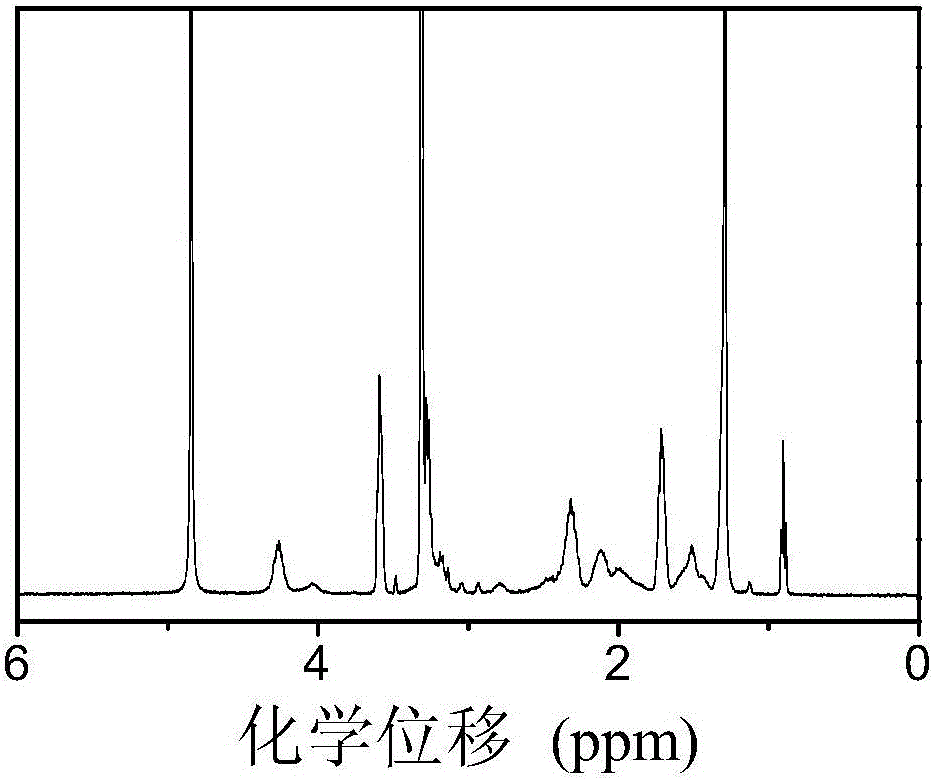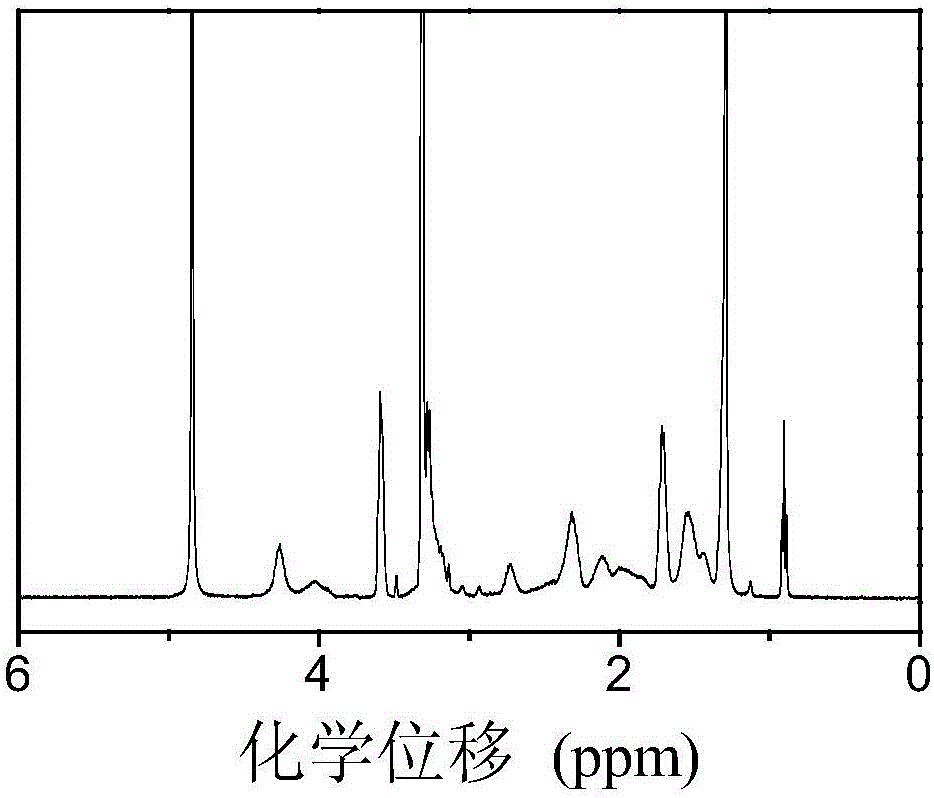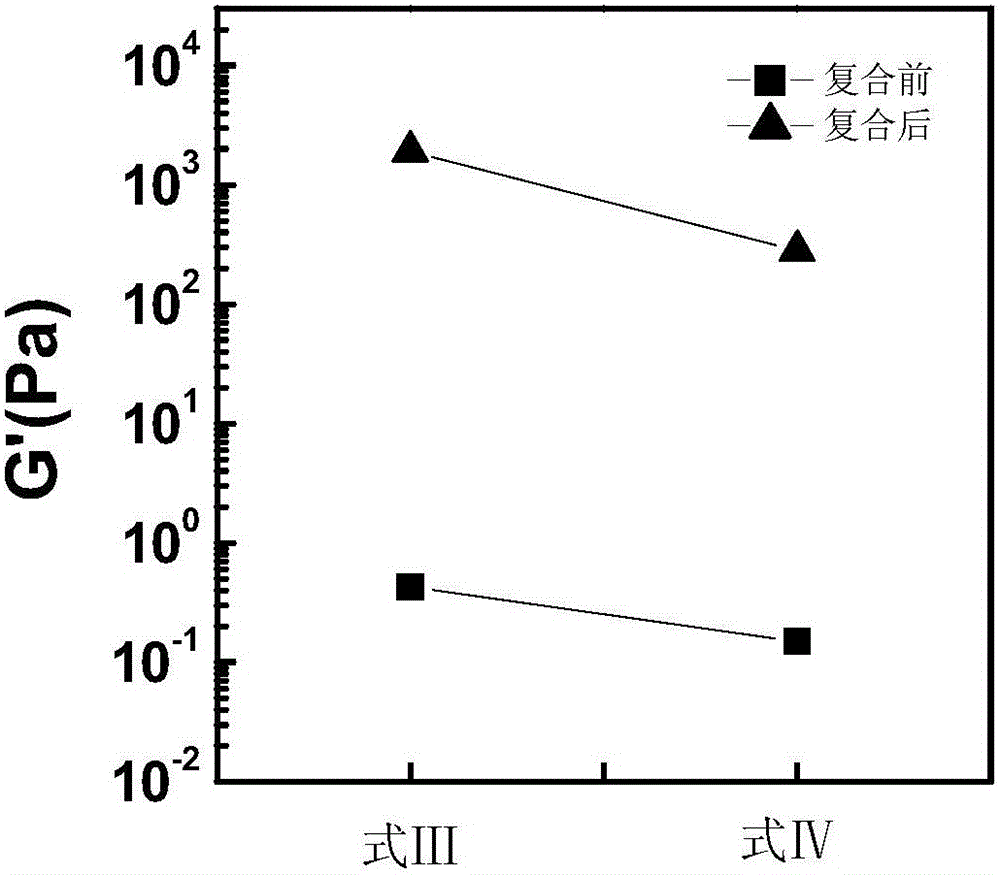Oligo-polyamino acid and sodium alginate combined hybrid antibacterial hydrogel
An amino acid and oligomerization technology, applied in the field of biodegradable materials and biomedical materials, can solve problems such as the decline of antibacterial properties, and achieve the effects of short synthesis cycle, short preparation cycle and easy large-scale production.
- Summary
- Abstract
- Description
- Claims
- Application Information
AI Technical Summary
Problems solved by technology
Method used
Image
Examples
Embodiment 1
[0067] Example 1. Preparation of amphiphilic molecule based on polyamino acid of formula III and its hybrid hydrogel
[0068]
[0069] (1) Take 10g of γ-benzyl-L-glutamate and 5g of triphosgene into the reaction flask, dissolve the two with 200ml of tetrahydrofuran under nitrogen protection, and raise the temperature to 50℃ to react for 4 hours, the system changes from turbidity After clarification, the solvent was drained to obtain a pale yellow solid, which was recrystallized three times with tetrahydrofuran and n-hexane to obtain white needle-like crystals of γ-benzyl-L-glutamic acid N-carboxy-cyclic anhydride compound (BLG-NCA ) 8.93g, the yield is 80.47%. The same method was used to prepare the N-carboxy-cyclic anhydride compound (ZLL-NCA) of ε-benzyloxycarbonyl-lysine.
[0070] (2) The polymerization reaction in this step is carried out in a reaction flask under the protection of nitrogen: 5.26g (20mmol) of BLG-NCA and 1.53g (5mmol) of ZLL-NCA in step (1) are taken and disso...
Embodiment 2
[0078] Example 2. Preparation of amphiphilic molecules and hybrid hydrogels based on polyamino acids of formula IV
[0079]
[0080] (1) Take 10g of γ-benzyl-L-glutamate and 5g of triphosgene into the reaction flask, dissolve the two with 200ml of tetrahydrofuran under nitrogen protection, and raise the temperature to 50℃ to react for 4 hours, the system changes from turbidity After clarification, the solvent was drained to obtain a pale yellow solid, which was recrystallized three times with tetrahydrofuran and n-hexane to obtain white needle-like crystals of γ-benzyl-L-glutamic acid N-carboxy-cyclic anhydride compound (BLG-NCA ) 8.93g, the yield is 80.47%. The same method was used to prepare the N-carboxy-cyclic anhydride compound (ZLL-NCA) of ε-benzyloxycarbonyl-lysine.
[0081] (2) The polymerization reaction in this step is carried out in a reaction flask under the protection of nitrogen: 3.95g (15mmol) of BLG-NCA and 3.06g (10mmol) of ZLL-NCA in step (1) are taken and dissol...
Embodiment 3
[0089] Example 3. Antibacterial performance test of a polyamino acid-based amphiphilic molecule and sodium alginate hybrid hydrogel of formula III
[0090] (1) The amphiphilic molecule based on polyamino acid shown in formula III is dissolved in pure water with a mass fraction of 1%, and sodium alginate with a mass fraction of 0.2% (molecular weight is 5000 Da) is added to make the two fully mixed Dissolve to obtain an aqueous mixture of the two;
[0091] (2) The obtained mixture aqueous solution is added to a petri dish and allowed to stand at room temperature for 12 hours to form a thin hydrogel layer spontaneously;
[0092] (3) Add a concentration of 10 to the surface of the hydrogel obtained above. 4 CFU / ml, 10 5 CFU / ml, 10 6 CFU / ml and 10 7 CFU / ml E. coli culture solution, culture for 24 hours (cultivation conditions: 37°C, 180rpm), suck the upper bacterial culture solution, and test the OD of the corresponding sample by UV spectrophotometer 600nm The value characterizes the i...
PUM
 Login to View More
Login to View More Abstract
Description
Claims
Application Information
 Login to View More
Login to View More - R&D
- Intellectual Property
- Life Sciences
- Materials
- Tech Scout
- Unparalleled Data Quality
- Higher Quality Content
- 60% Fewer Hallucinations
Browse by: Latest US Patents, China's latest patents, Technical Efficacy Thesaurus, Application Domain, Technology Topic, Popular Technical Reports.
© 2025 PatSnap. All rights reserved.Legal|Privacy policy|Modern Slavery Act Transparency Statement|Sitemap|About US| Contact US: help@patsnap.com



